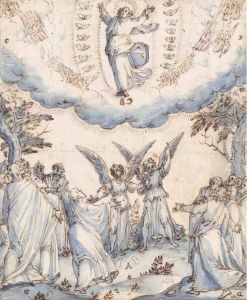Wenceslas Coebergher Paintings
Wenceslas Coebergher, born in Antwerp in 1561 and passing away in 1634, was a multifaceted figure of the late Renaissance and early Baroque periods in the Southern Netherlands. His contributions spanned across various fields including architecture, painting, engineering, and economics, showcasing a rare blend of artistic and intellectual prowess that was highly esteemed by his contemporaries. Coebergher was not only a skilled artist but also a pioneering engineer and an astute financial advisor, which positioned him as a key figure in the cultural and economic development of his time.
Educated in Italy, Coebergher was deeply influenced by the principles of the Renaissance, which is evident in his architectural works that blend Italian Renaissance elements with the local Flemish tradition. One of his most significant architectural contributions was the design of the Basilica of Our Lady of Scherpenheuvel, which is considered one of the first Baroque buildings in the Low Countries. This church was commissioned by the Archdukes Albert and Isabella, rulers of the Spanish Netherlands, who held Coebergher in high esteem and entrusted him with several important projects.
Aside from his architectural works, Coebergher was also involved in various engineering projects, including the development of water supply systems and the draining of marshlands, demonstrating his versatile talent and innovative thinking. His interest in economics led him to play a crucial role in the reformation of the monetary system in the Southern Netherlands, further highlighting his multifaceted expertise.
Coebergher's artistic legacy, however, extends beyond his architectural and engineering feats. He was also a talented painter, although fewer of his paintings have survived. His works are characterized by their detailed execution and the influence of his Italian training, contributing to the diffusion of Baroque style in Flemish art.
Throughout his life, Wenceslas Coebergher remained a prominent and influential figure, bridging the worlds of art, science, and finance. His contributions left a lasting impact on the cultural landscape of the Southern Netherlands, making him a key figure in the transition from the Renaissance to the Baroque period. Coebergher's death in 1634 marked the end of an era, but his legacy continues to be celebrated for its significant contributions to the arts and sciences.
